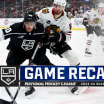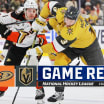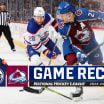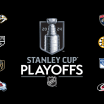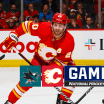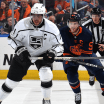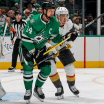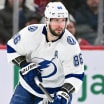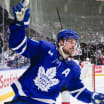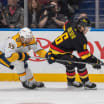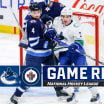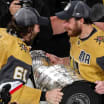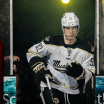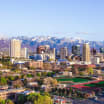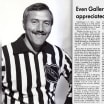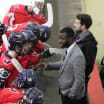A Seattle expansion team will play in the NHL starting in 2021-22. NHL.com is posting a series of stories this month about the NHL Seattle organization, the local hockey scene and the city's rich hockey history.
Today, growing the game.
Seattle NHL expansion team will grow with hockey community
Expect arrival to create 'fans for life or playing for life'
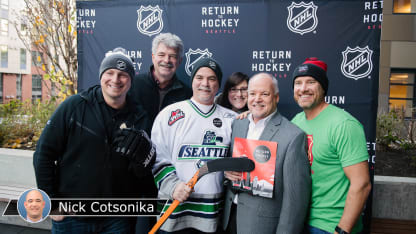
SEATTLE --After the NHL Seattle expansion announcement Dec. 4, Jaina Goscinski stepped on stage. There she was, an 11-year-old who plays for the Washington Wild, wearing her jersey in a hotel ballroom full of dignitaries in Sea Island, Georgia.
She wasn't just witnessing history. She was part of it.
NHL Commissioner Gary Bettman shook her hand. Jerry Bruckheimer, the Hollywood producer who is part of the Seattle ownership group, introduced her.
"She is the future," Bruckheimer told the audience, "and a future fan for our franchise."
Jaina stood next to David Wright, another member of the Seattle ownership group, who gave the Commissioner a No. 32 jersey in honor of the NHL's 32nd team.
She posed for a photo with the Commissioner, Bruckheimer, Wright, lead owner David Bonderman and NHL Seattle CEO Tod Leiweke, who patted her on the shoulder and put his arm around her.
Kelly and Jason Goscinski, her mom and dad, sat in the front row.
"I was trying not to cry," Kelly said.
The gesture was genuine, and so were the tears.
Watch: Seattle Awarded National Hockey League's 32nd Franchise on Youtube
The Seattle hockey community is small, but strong and growing. It helped Seattle land an NHL team, and the NHL team is committed to helping it grow further.
Kelly is president of the Western Washington Female Hockey Association, the first and only female association in Washington state. It has 168 registered players 18 and under, with more girls in its learn-to-play program.
She brought players to Seattle City Council meetings, partly to advocate for an arena to bring an NHL team to Seattle, partly to give the girls civics lessons. On Sept. 14, she brought a group to a meeting to discuss an ordinance related to authorizing the redevelopment of KeyArena.
The girls listened to Leiweke. Soon afterward, wearing their jerseys, they spoke themselves.
Jaina went first.
"What hockey means to me is …" she said, thinking for a second. "I just love playing it. It's so much fun."
Ten days later, the Seattle City Council voted in favor of the redevelopment of KeyArena, a privately financed project now estimated to cost $800 million.
The NHL Board of Governors Executive Committee recommended Seattle expansion Oct. 2.
A week after that, NHL Seattle unveiled plans for a training center, a privately financed project that will cost $75 million. It will be more than the headquarters of the NHL team. It will have three sheets of ice.
"What happens in 10 years or 15 years or 20 years?" Leiweke said. "Will we have grown the game here? If you believe in the game and all the good people that come out of the game, then that should be one of your legacies. That's one of the absolute terrific opportunities.
"That's part of why we didn't just take an existing rink and put some trailers in the back. We said, 'How can we truly grow the game?' Our facility will be a place where skilled hockey players will come and take their game to another level, and it will also be a place where someone who has never put on a pair of skates will come and find incredible inspiration.
"It's very exciting that our ownership has made this decision to make this kind of investment early on in a facility like that, and that will be the beachhead for growing the game."
Nick Cotsonika on Dave Tippett's role with Seattle
Kelly was invited to the training center announcement as president of the WWFHA. She took Jaina. When Leiweke saw Jaina, he invited her on stage to be his spokesperson. She stood with Leiweke, posed for pictures and spoke to reporters.
She must have done well, because in late November, Kelly received a call inviting Jaina to Sea Island for the big day.
There was one problem.
"She was a little upset," Kelly said, "because she had to miss a game and two practices."
* * * * *
The state of Washington has not been a hockey hotbed. Only 14 players born in the state have played in the NHL. At least nine were born outside the Seattle area, depending on how you define it. Seven were born in Spokane, 280 miles east.
Five have played in the NHL this season: San Jose Sharks forward Dylan Gambrell, Tampa Bay Lightning forward Tyler Johnson, Washington Capitals forward T.J. Oshie, Calgary Flames forward Derek Ryan and Edmonton Oilers forward Kailer Yamamoto.
Oshie was born in Everett, about 30 miles north of Seattle, Gambrell in Bonney Lake, about 40 miles south of the city. The others were born in Spokane.
Elite players have had to leave Seattle to chase their dreams.
Take Oshie, whose 479 points (197 goals, 282 assists) make him the state's NHL scoring leader. He played 10 years in the Seattle Junior Hockey Association. But then, partly for family reasons, he moved to Warroad, Minnesota.
Or take Lexi Bender, a defenseman for the Boston Pride of the National Women's Hockey League. She was born in Snohomish, near Everett, and played with boys for Seattle Junior until her freshman year of high school. But then she sustained a broken collarbone and ended up at Shattuck-St. Mary's in Faribault, Minnesota.
"The boys were getting too big," Bender said. "Three weeks before I left, my parents got a puppy. I would have done anything to stay home. But the opportunity was in Minnesota."
That said, high-level hockey has been played in Seattle for more than a century.
The Seattle Metropolitans of the Pacific Coast Hockey Association were born in 1915 and became the first U.S. team to win the Stanley Cup when they defeated the Montreal Canadiens of the National Hockey Association in 1917, months before the NHL was founded.
The Mets folded in 1924. But professional teams played in Seattle almost continuously until 1975, and major junior arrived in 1977 when the Kamloops Chiefs of the Western Canada Hockey League moved to Seattle and became the Breakers. The WCHL became the Western Hockey League in 1978; the Breakers became the Thunderbirds in 1984.
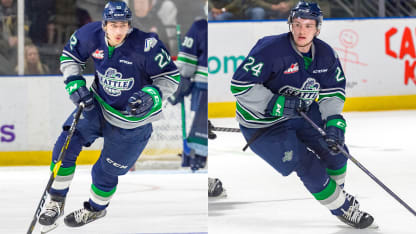
Dillon Hamaliuk (l.) and Jake Lee are two of the top players on the Seattle Thunderbirds of the Western Hockey League. Photos by Brian Liesse/Seattle Thunderbirds
The Thunderbirds played in Seattle -- sometimes under the same roof where the NHL team will play, drawing crowds as large as 12,000 -- before moving to the 6,150-seat accesso ShoWare Center in Kent, about 20 miles south of the city, in 2009.
Many NHL players have roots with the Thunderbirds. Current alumni in the League include New York Islanders forward Mathew Barzal, San Jose Sharks defenseman Brenden Dillon, Vegas Golden Knights defenseman Shea Theodore and Toronto Maple Leafs forward Patrick Marleau.
The Tacoma Rockets played in the WHL from 1991-95 before moving to Kelowna, British Columbia.
The Everett Silvertips joined the WHL in 2003 and have produced 18 NHL players, including Philadelphia Flyers defenseman Radko Gudas, Edmonton Oilers forward Jujhar Khaira, New Jersey Devils defenseman Mirco Mueller and Columbus Blue Jackets defenseman Ryan Murray.
"I was there when the Silvertips came to the Everett area, and I saw the excitement about the sport," Bender said. "I grew up playing it, so I'm biased. But I know people go to the game and they're hooked, whether they're going to be fans for life or playing for life. I think that's just going to be tenfold with an NHL team."
* * * * *
Hockey has grown significantly without an NHL team over the past decade, according to USA Hockey statistics.
Seattle and its surrounding suburbs had 3,024 registered players in 2008-09, including 1,058 boys and 121 girls 18 and under.
That grew to 3,519 in 2013-14, including 1,145 boys and 156 girls.
That grew to 4,405 in 2017-18, including 1,389 boys and 355 girls.
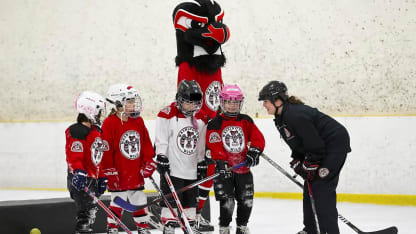
Girls in the Seattle area take part in the Washington Wild's Learn to Play program. Photo by Eric Badeau
That has corresponded with the overall growth of the Seattle metro area. It had 3.4 million people in 2010. It now has more than 3.8 million.
"Our market actually has a thriving youth hockey program throughout the state," Kelly Goscinski said. "Could we get more numbers? Of course. But for where we are and how far we've come without an NHL team, we're not struggling."
The local hockey culture has been bolstered by transplants.
Like Andy Cole. He was born in Boston and grew up in Simsbury, Connecticut. When the New England Whalers joined the World Hockey Association in 1972, he developed a passion for the game. When he moved to Seattle in 1990, he played in an adult league until it fell apart.
"So, I started a league to make sure I had a place to play," Cole said.
Cole founded the Greater Seattle Hockey League in the summer of 2001. It had 20 teams of adults. About four years later, running the league became his full-time job.
"I didn't plan on it being big," Cole said. "I didn't plan on it being a real business. It just sort of grew.
"They built a few new rinks, so I was kind of lucky there. Every time a new rink got built, they would call me and go, 'Hey, can you run the adult league or have your adult league rent ice here?' And I was always like, 'Well, I'll try. We'll see how it goes.'
"They always kind of pushed me to buy more ice, so I would sort of risk it and commit to ice and hope the players materialized. They always did."
Tippett on new Seattle franchise, expansion draft
About four years ago, the GSHL peaked at 113 teams. Then it dropped.
The reason? An increase in interest.
The GSHL ran into competition from the Sno-King Amateur Hockey Association, which runs a two-sheet rink in Renton, about 16 miles southeast of Seattle, and a one-sheet rink in Kirkland, about 15 miles east of the city.
"Fifteen years ago, I kind of looked into starting our own adult league," said Sno-King director of facilities Jamie Huscroft, who played four seasons for the Breakers/Thunderbirds and 352 games in the NHL. "We just couldn't do it. There wasn't enough interest around. So, I leased it out to the GSHL, Andy Cole, and so we used to be his No. 1 customer.
"Hockey got so big here, [Sno-King hockey director Doug Kirton] and I kind of got together and said, 'What's best for the rinks?' It's like, 'We need our own adult leagues.' So, we created our own adult leagues, and we stopped renting the ice to him."
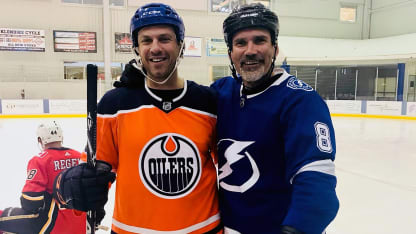
Former NHL player Jamie Huscroft (r.), who used to rent ice to another adult league, has started the Sno-King league in Seattle because 'hockey got so big here.'
Huscroft thought it would take three years to reach maximum capacity. It took less than a year and a half. He added Friday and Saturday night slots. Now, at the same time the GSHL is back up to about 90 teams, Sno-King has 48 teams and needs bye weeks.
"Teams don't want bye weeks," Huscroft said. "They want to play every week. And we're like, 'We have four too many teams in each division, so everybody can play. So, it means that you're going to have two to three bye weeks'."
Drop-in hockey can be packed. At lunch time. On weekdays.
"We've got a lot of Microsoft, Google, Amazon employees," Huscroft said. "These guys work their own hours. So, we can do that."
Sno-King is the largest youth hockey association in the Seattle area with about 400 beginners and 650 players 18 and under.
"I've seen this hockey program from the youth side grow exponentially," Huscroft said in his office in Renton. "I mean, 15 years ago when we were here at 4 o'clock, it was like a ghost town. Now at 4 o'clock on a Monday, Tuesday, there's a hundred kids waiting to get on the ice. You can't park."
This year, Cole became commissioner of the Metropolitan Hockey League as well. Named for Seattle's Stanley Cup champions, it is an umbrella for youth rec leagues across western Washington state.
"We know hockey," Cole said. "We're ready for hockey. And I think there's probably a lot of dads out there that maybe grew up playing hockey and kind of wish their kids were interested. All of a sudden that kid's going to go to the dad and say, 'Hey, Dad, I want to go a game,' or, 'I just saw my first game, and I want to go play,' and the dad's going to go, 'Oh, awesome'."
* * * * *
History shows that when the NHL expands, hockey grows in the new market. USA Hockey provided five-year comparisons of recent expansions (excluding Las Vegas, because the Vegas Golden Knights are less than two years into their existence):
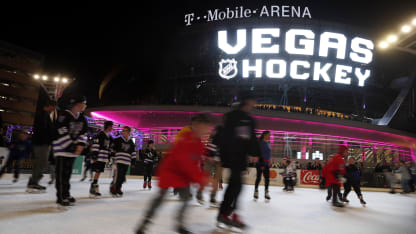
© Isaac Brekken/Getty Images
Childen skate on a rink outside of T-Mobile Arena in Las Vegas on Nov. 22, 2016, the day the Vegas Golden Knights logo and team name were unveiled.
The San Jose Sharks entered the NHL in 1991, the Mighty Ducks of Anaheim in 1993. From 1991-92 to 1995-96, California grew from 6,314 registered players to 14,896.
The Tampa Bay Lightning entered the NHL in 1992, the Florida Panthers in 1993. From 1992-93 to 1996-97, Florida grew from 1,050 registered players to 3,220.
Tennessee went from 1,176 to 2,039 in the five years after the Nashville Predators entered the League in 1998, Georgia from 1,282 to 1,828 after the Atlanta Thrashers in 1999, Ohio from 11,565 to 13,084 after the Columbus Blue Jackets in 2000 and Minnesota from 43,173 to 46,684 after the Minnesota Wild in 2000.
The question isn't if hockey will grow in the Seattle area and the state of Washington after the new NHL team begins play. Cole already has seen a bump in the GSHL since the expansion announcement, adding two more teams.
The question isn't whether the NHL will hurt the WHL, either, apparently. The Thunderbirds and Silvertips have built solid bases in their suburban areas, they will have different price points and rising tides lift all boats, at least in theory.
NHL Seattle has reached out to the WHL teams and the two junior teams have been welcoming. The day of the expansion announcement, members of the Thunderbirds organization gathered on the ice at ShoWare Center holding cards spelling: "WELCOME NHL TO SEATTLE!" NHL Seattle senior adviser Dave Tippett participated in the ceremonial face-off before Everett hosted Seattle on Saturday.
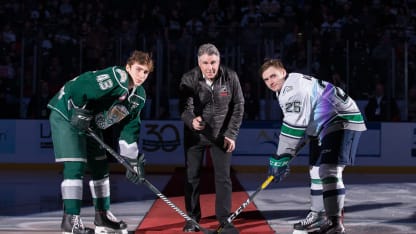
"What we've always thought is that the proliferation, the growth in the game, will make up for any fans we might lose to the NHL," said Thunderbirds vice president of hockey operations Russ Farwell, who was general manager of the Philadelphia Flyers from 1990-94 and of the Thunderbirds from 1994-2018. "We're banking that holy, geez, the NHL is here, and it will kick off the interest."
The question is how much hockey will grow and where newcomers will play. The Seattle area has about 10 to 15 rinks, depending on where you draw the line, and building rinks is pricey, especially in a place with a hot real estate market. NHL Seattle's three-sheet training center will be desperately needed.
"I think it's going to grow like crazy," Cole said. "We're pretty close to capacity at this point. Some people will say we're over capacity. I don't agree. We're at a nice, healthy level, but we're not full. I've never had to turn away a player, ever. But I think that's going to change once these guys start playing."
Huscroft has adults on the ice until 12:15 a.m. He's looking into starting at noon, maybe earlier.
"Personally, I'm nervous," Huscroft said. "Customer service, you want to take care of everybody. Well, they're going to come knocking, and what do you do? We can't take anybody."
Huscroft hopes to rent ice at the NHL Seattle training center, which will be in the Northgate shopping area in the northern part of the city.
Farwell hopes more rinks will be built in the Thunderbirds' area.
"The first time you hear a community rink is built in Federal Way or Auburn or Burien, somewhere south of the city, that means it's a success," Farwell said. "In order to build long term -- 15, 20, 25 years -- people have to access to the game.
"If we can get just a few more rinks, if a kid doesn't have to move away to be a hockey player, if our minor hockey can get good enough where a kid can play here through his 15-year-old, 16-year-old season, then they've got to make choice. But they shouldn't have to move away."
One thing that has helped already, and should help in the meantime, is USA Hockey's American Development Model.
When kids learn to play, they aren't thrown in game situations on full-sized ice. They go station to station doing drills that don't feel like drills, so it holds their attention and they have fun developing skills. When they scrimmage, the ice is divided into thirds by width, so more kids play at a time while skating on a surface the right size for their age.
"We're starting to get some of our better athletes to decide to play hockey in Seattle, just because the youth hockey programs have adopted the model," said Pittsburgh Penguins skating and skills development coach Ty Hennes, who grew up in Kent from ages 10 to 15 and covered the western United States as a regional manager for the ADM at USA Hockey from 2013-15.
"Kids enjoy coming to the rink more. It's not the loop-and-shoot, two kids moving and 40 kids on the ice standing still. With the limited number of ice sheets in Seattle, it's a perfect storm of having to put more kids on the ice but then delivering a great product where kids want to keep coming back."
* * * * *
NHL Seattle had two meetings with all the hockey associations in the area before the expansion announcement.
"Our message here is, we want to work with everybody," Tippett said. "We want to just grow the game, because it's good for everybody. I think it was important for us to reach out to all those groups to make sure that nobody's going to be excluded, even the smallest little rinks down south and stuff. We want to make sure everybody's thinking the same thing, that we're going to grow the game."
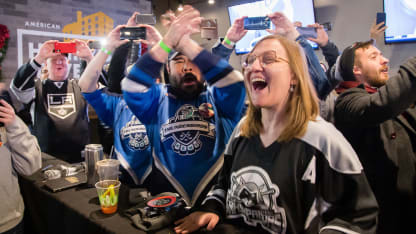
© Icon Sportswire/Getty Images
Fans in Seattle celebrate announcement that their city will be home to latest NHL expansion team.
That impressed Huscroft, especially considering the success of the season-ticket drive. Oak View Group, the company leading the redevelopment of the arena, began March 1 hoping for 10,000 deposits. Fans met the goal in 12 minutes. After fans made 32,000 deposits in 31 hours, OVG stopped the drive and started a waiting list. It now has about 17,000 names.
"I'm shocked at how much attention they're giving us," Huscroft said. "There's some teams that could come in and say, 'You guys are nothing. I don't need you. We're full.' Not these guys. These guys are like, 'We want to work together'."
Go to NHLSeattle.com. Scroll to the bottom. The site says, "Get to know Seattle's Youth Hockey Community." There are the logos of the junior teams and local associations like Sno-King, Seattle Junior and the WWFHA.
"Hockey, just like any sport, can have its unique politics," Leiweke said. "Hopefully, we're going to be a unifier, and we're going to get everyone sort of pulling together to say, 'Who's going to be the next Seattle player in the NHL? How do we grow the next Olympian?' "
It starts with inspiration and opportunity for kids like Jaina Goscinski.
"It's just getting their feet in skates for the first time and watching that spark, watching them come off the ice, smiling, and their cheeks are all red, saying, 'This is awesome. I want to do this,' " Kelly Goscinski said. "That's what it's all about."
